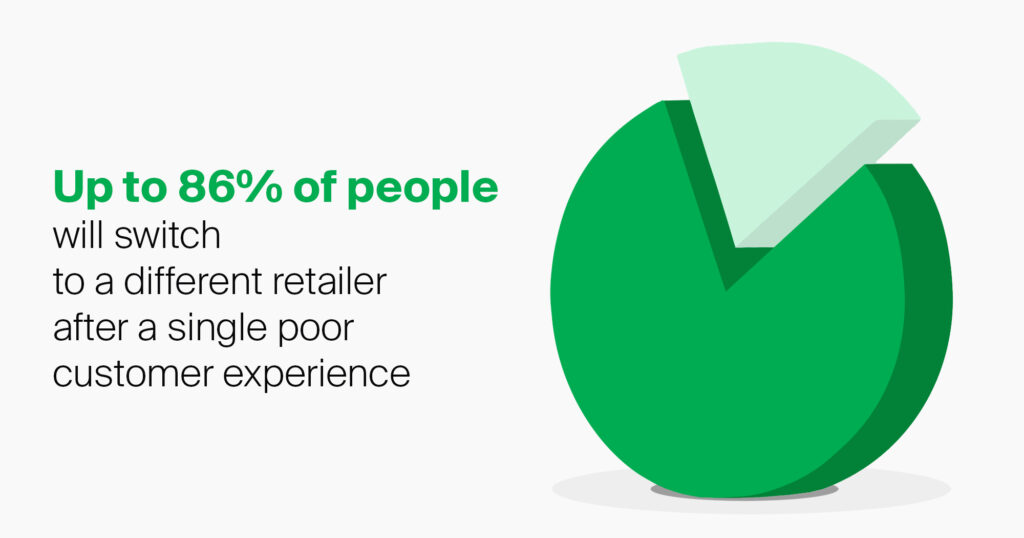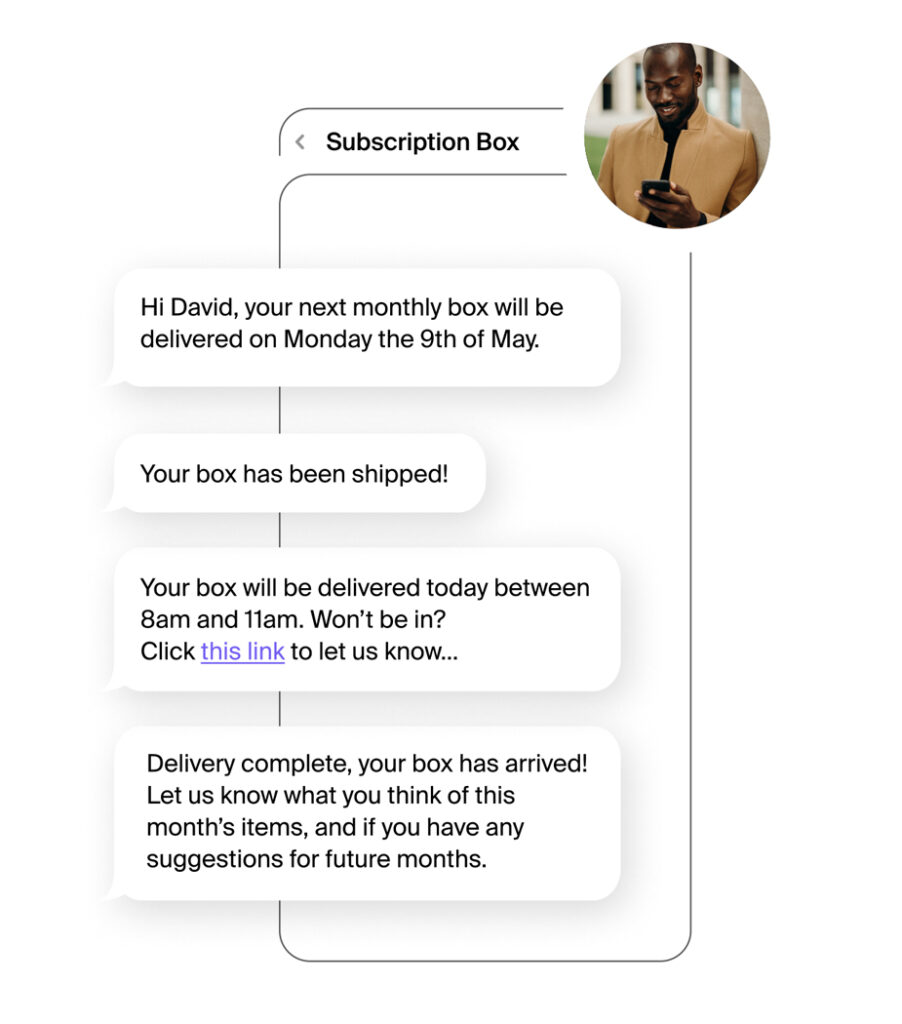Welcome to the final part of our series on the customer journey. Following on from our coverage of engagement and conversion, we’re going to be covering retention. Now that you’ve got an engaged customer, and you’ve made at least one sale, it’s time to think about how best to retain their loyalty towards your brand.
Now that we have made a sale, what comes next?
The customer journey does not just end with a successful purchase. In fact, the best customers will keep coming back to you again and again, if you continue to engage them in the right way. Building on this momentum after a purchase is the key to securing your long term revenue stream.
According to research by Econsultancy, 82% of companies agree that retention is cheaper than acquisition. On top of that, they also found that for many companies as much as 65% of their income comes from repeat customers.
So your first step must be to follow up on your sale. You may already be providing shipping and delivery updates to your customers, but in my opinion that’s the bare minimum. Making a purchase should pull your customer out of a campaign that you’ve set up to make the conversion and into a different one designed for retention.
Here’s how you can continue to engage your customer post-conversion:
- Offer a complementary product like a case for a phone, ink for a printer, or specialist cleaning supplies for an athletic product
- Ask how the purchase is going, you could even offer an incentive for a review and support on returning if the item isn’t right
- Depending on the product, reach out with relevant content. If you’re selling running shoes you could reach out with a training programme for 5k running
- Offer a discount on further purchases
Customer loyalty lower than ever
One reason it’s important not to just do the basics in terms of post-conversion communication is that if you don’t do it, somebody else will. Customer loyalty is currently at an all-time low, with a study from BusinessWire recently showing that 74% of millennials, 82% of GenXers and 86% of baby boomers would switch to a different retailer after a single poor customer service experience.
Competing with eCommerce giants such as Amazon or Alibaba requires you to offer something distinctively better. You may not be able to compete on price with some of these big companies, but you can definitely compete to retain your customers. How many times have you heard about these big site deliveries being lost, left outside in the rain or the products not being as advertised? Make sure that’s not something your customers can say about you, even if it costs you a little more.
Your messaging is a huge part of that. Set up that retention campaign we talked about, make sure you have multiple touch points of messaging with your customers and that your customer service is fast and helpful.

Timely, relevant offerings
What you offer to your customers and when you offer it can be a huge factor in retaining them. Let’s take for example a customer who has bought a mobile phone from you. There’s no point in offering them a phone case two months down the line. Almost everyone nowadays will buy their phone case to use when the new device arrives, so maybe in the order confirmation message suggest a compatible case which they can add to their order easily, so they arrive at the same time.
This is a great short-term plan for retaining this customer, but what about the long term? In this example of somebody who purchases a new phone, take a look at their purchase history. Is this the first time they have bought a phone or a case from you? Use the data you have to decide when is a good time to send them a message about purchasing an upgrade or new device in a longer timeframe. If you have no purchase history before this date, then you can always go by the national average. Most people in developed countries change their phones every two to three years, so get in touch just before then.
If you’re using a CRM and CPaaS solution in combination you could set up a chain of messages to go to your customer, kicked off by their purchase of a new phone and ending 2-3 years later in an offer to trade-in their old device and buy a new one.
Personalisation
These timely and relevant offerings are another example of personalisation, but you can go further. According to a report on personalisation by Accenture, 91% of consumers say they are more likely to shop with brands that provide offers and recommendations that are relevant to them.

While you should be keeping track of activity and purchases that customers make, you should also try to proactively gather data to tailor their experience. Why not reach out to your customers with a survey? You can be frank and just say you’re looking to get their feedback, so you can tailor your communications and offers to their preferences. A large number of customers will appreciate a personalised offer, and will volunteer information to help you do just that.
Subscription services — are they the new retention campaigns?
One of the biggest trends over the 2010s was the introduction and popularity of subscriptions for products that would normally be purchased on a sporadic schedule. Companies like Blue Apron for recipe kits, Loot Crate for niche merchandise, Harry’s for shaving supplies and many more have been a fast-growing segment of the market, and anyone who listens to a few podcasts has likely heard their adverts thousands of times.
So is the subscription service the new retention campaign? They provide brands with recurring income from their customers and don’t require as much marketing spend as the traditional retention campaign, but then the pressure is on the product teams to deliver continued value at the same or an increased level.
Even though the focus is on the products in a subscription, you can’t just stop communicating. One of the biggest reasons people will cancel these boxes is poor communication, so make sure that if you’re preparing a subscription service, you’re also ready to keep your customers informed on the status of their orders frequently. You could send SMS shipping updates or sneak peeks of the contents of the next surprise delivery via an OTT messenger like Viber.

Experience is everything
We’ve talked a lot about things you can do to improve retention here, but one thing that is especially important is customer experience. How many times have you been looking at a product, but lost interest because of how poorly made the company’s website is? Your customers are likely to assume that a poor customer experience also means a lack of care and attention in your products, which would be the death of any ideas you might have about retention.
Here are some excellent techniques for improving your customer experience:
- Make sure you are using fallback options. A good CPaaS solution, like the GMS Business Communications Suite, is able to send your message via popular OTT messengers, but if that message isn’t delivered in a timely manner they can automatically resend the message via SMS. As SMS messages have a 98% delivery rate, this means that you can be sure that your customer has seen the message. This is especially important for retention, as you don’t want to waste the time spent crafting an excellent message as part of your retention campaign by it just never being delivered.
- Keep your customers updated on the status of their orders. Just like in the example above for the subscription box, make sure you keep your customers in the loop as to what’s happening with their orders. Frequent updates via SMS or OTT messaging will mean they don’t have to go out of their way to log in to their account and see what’s going on.
- Your customer service team must be fast and helpful. Using two-way messaging features on your CPaaS solution, your team can undertake multiple support chats at the same time, which means your customers won’t have to wait in tedious queues.
- Find out your customer’s preferences. Most people will have a favourite messaging app, be it SMS or an OTT messenger like Viber. Make sure to use the customer’s preferred channel when you contact them.
Advanced techniques — creating superfans
Finally, we have a bit of an advanced technique, not just retaining your customers but turning them into advocates for your product. We talked about this last year when talking about building communities of Superfans, where we explored how turning your customers into fans and evangelists for your product or service can be a huge benefit to your business. Customers with an emotional relationship with a brand have a 306% higher lifetime value, and this is just the start, as they will also recommend you to their friends and family — bringing them into the fold as customers as well.
Here are some tips to help you get started:
- Make your future fans feel valued with unique, useful content — don’t just send out the same old stuff. Get personal and send them something they will truly value, for example, if a customer buys some exercise equipment from you, why not send them a pre-made workout programme using it.
- Give them control — let them choose how often and when you contact them. Nothing will tell your customers how much you value their time than letting them decide how often you message them. You might be concerned that most will opt out of your communications if you give this option, but if you’re offering value, then more people will stick around than you might think.
- Surprise offers — everyone loves a nice surprise. Make sure you’re in touch on landmark dates like birthdays and Christmas with a relevant offer. If they buy something from you that has a set life span, like for example an electric toothbrush, get in touch when it’s time to replace the head with a discount on a refill.
That’s all folks!
You’ve made it to the end of our three-part article series, thanks for reading! If you have missed part 1 and part 2 you can click the links above to read them. As you might be able to tell by the length and depth of this series, the customer journey is something we’re really passionate about at GMS. If you need help with your customer journey, or you’d like to talk about incorporating mobile marketing, CPaaS solutions or SMS into your business, then you can contact our experts today.

